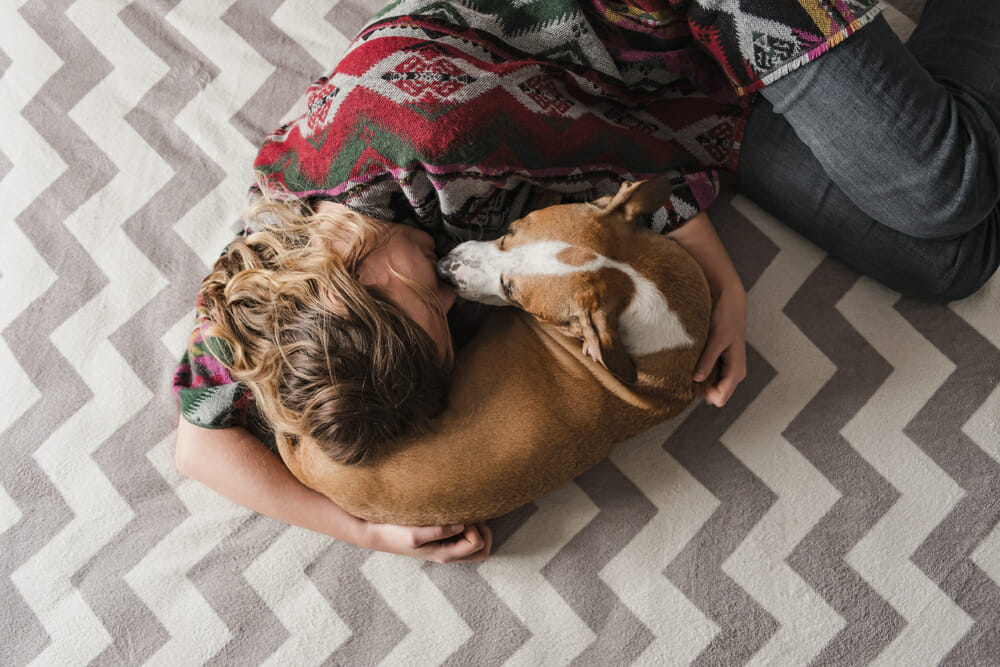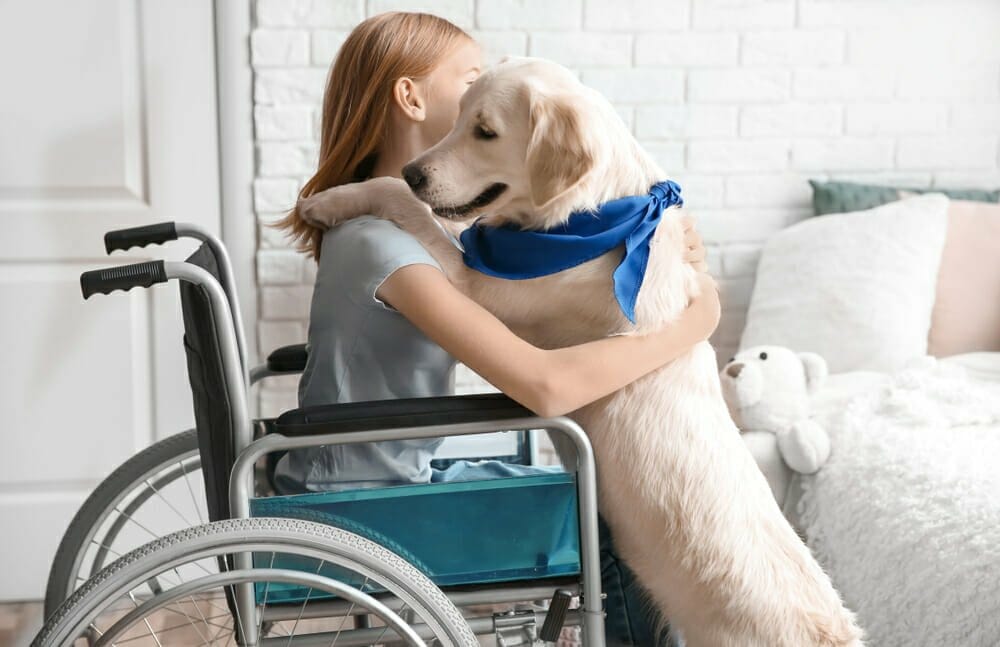The number of dogs wearing “Service Dog” vests has risen exponentially over the past decade. Previously thought of as predominantly “seeing eye dogs”, service dogs today provide invaluable assistance and freedom to handlers managing a wide variety of physical and psychological disabilities! So what are service dogs and what should you do when you encounter a service dog team?
Service Dog Registry
If you are trying to register your dog as a service dog, it’s important to realize that in the United States, there is no mandatory registration or documentation that SD teams need to present in order to be granted entry & protections under the Americans With Disabilities Act. Some service dog training programs may give teams a certificate upon graduation, but this is not legally recognized documentation. Same with predatory “register your pet as a Service Animal / ESA today!” companies. The ID card you pay good money for is NOT recognized by the Department of Justice as proof of a service animal. Don’t fall for it!

If There’s No Official Registry, Then What is a Service Dog?
Service animals (federally recognized as dogs and sometimes mini-horses) are specially trained animals who perform specific tasks for an individual with a disability. The tasks must relate directly to the individual’s disability. Service dogs must be under control at all times and they cannot be disruptive (repeated barking), or pose a health & safety risk (eg. lunging, biting, eliminating indoors, jumping, sitting at the table, riding in carts, etc).
Service dogs do NOT need to wear a vest or other identification, although many teams choose to use them. In cases where a business is unsure if a dog is a service animal, there are 2 questions they’re allowed to ask. 1) “Is the dog a service animal required because of a disability?” and 2) “what work or tasks has the dog been trained to perform?”. The staff are NOT allowed to ask for any documentation or demonstrations of tasking. Occasionally a business may also ask the breed of the service dog so they can notify their staff and spare the service team from being asked these questions repeatedly. You can check out the ADA frequently asked questions about service dogs here.
What are the differences between Service Dogs, Home Service Dogs, Emotional Support Animals, and Therapy Dogs?
Not all working dogs are service dogs, and not all service dogs go into public! While the “standard” service dog is trained for public access work and performing their tasks in a variety of environments, not every handler is comfortable with a living breathing indicator that they have a disability. For this reason (among many others), some handlers choose to have their service dogs work primarily at home, and utilize other medical devices, accommodations, and human assistance when out in public. These “At Home Service Dogs” are still granted protections and privileges under the ADA and are exempt from breed bans, size restrictions, and “pet fees” for hotels or housing.

An Emotional Support Animal is an animal that provides comfort to their specific human. They are not specifically task trained and therefore are not granted protections and privileges under the Americans with Disabilities Act. These animals can be exempt from housing restrictions with a doctor’s note, but they are not given public access permissions and are not considered service animals.
A Therapy Dog is an animal who has undergone specialized training to provide comfort for multiple people with a specific institution (ex. hospital, dentist’s office, courtroom, library, etc). The handler is often a member of the institution’s staff or a volunteer, and the dog is taken around to provide comfort to different people within the institution.
Service Dogs aren’t just for the blind!
It’s important to remember that service dogs come in all shapes and sizes. The “Fab Four” – Labrador Retrievers, Golden Retrievers, Standard Poodles, & Collies – are generally the most common breeds used for service work, but any breed could potentially be a service dog. A Dachshund can perform allergen alert tasks and help their handler avoid anaphylaxis shock. An Australian shepherd may perform interruption tasks and deep pressure therapy to help a handler with PTSD and dissociative disorder come out of a flashback without harming themselves or others. A Great Dane may provide mobility support for a handler with a prosthetic. A pit bull may retrieve water, juice, and medications for an individual with diabetes. A Papillon may perform noise alerts and indication tasks for an individual who is hard of hearing or deaf.

What makes a service dog a service dog is the immense amount of training they receive before ever stepping out into the public. Service animals quite literally are responsible for the health, safety, and independence of their handler. Their training takes years and intensive effort on behalf of the pup, their trainer, and their handler. Whether owner trained or program trained, the bond between a service dog and their handler is unlike any other. I mean, can you imagine your dog being responsible for your very life or death?
How should I act around a service dog?
While there has been an increase in service dogs over the past decade, it can still be a big novelty to see a dog at work when out at a restaurant or shopping. The urge to compliment the handler or cheer on the excellent dog at work with some pets is very real… but generally best to be avoided. Some service dog teams don’t mind the occasional respectful compliment, but what could be appropriate for one person could send another person into a health flare. If you want to show your support, I would recommend a quiet respectful nod as you pass by. A good rule of thumb is to treat a service dog team like you would any other person with a medical device. Similar to how you wouldn’t try to check out the specs on a person’s wheelchair, make sure to treat service dogs on the job as the professionals they are!
As a service dog trainer, I’ll tell you right now that it’s the people who show me this kind of respect and space that I may actually grant the privilege to meet and pet my dog if he is due for a break anytime soon. It’s all about respect and making the world a more accessible place for everyone!
Love,
Your Friendly Neighborhood Ethologist




















